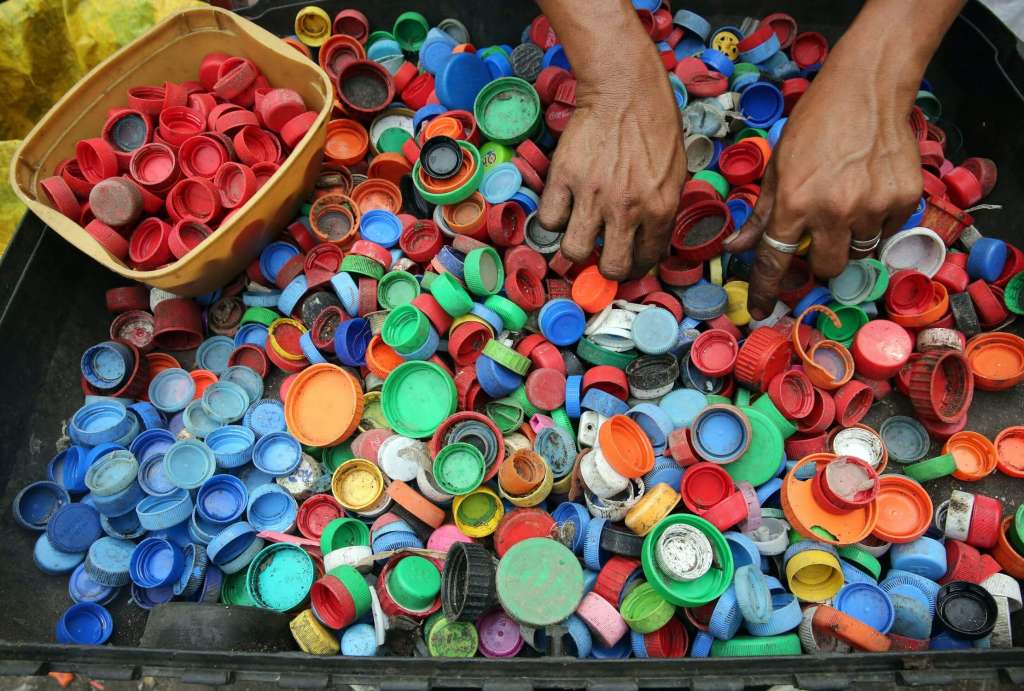As we’re all growing increasingly aware of the climate crisis and our impact on the environment, corporations and governments need to take action. But what can you as an individual do to reduce your carbon footprint?
Well, you can start by limiting the amount of plastic waste you dispose of at home. We all know that single-use plastic items like bottle caps, straws, and bags are extremely convenient. But did you know that every year 8 million metric tons of plastic find their way into our oceans? While recycling helps reduce the impact of discarded disposable plastics, it’s not a complete solution because not all of those discarded items can be recycled!
Here are four simple ways to reduce your household’s plastic pollution.
1. Choose Recycled & Sustainable Goods
To improve your carbon footprint and reduce how much plastic ends up in landfills, you can do more than just recycle. Conscious consumers, support companies that make recycled and sustainably made items!
Choosing to purchase recycled plastic home products and other sustainable goods whenever possible is voting with your wallet. By voting with your wallet, you’re supporting companies that take their impact on the environment seriously – and you’re encouraging other manufacturers to adopt sustainable, eco-friendly practices.
2. Carry a Reusable Water Bottle
With around 1.3 billion plastic bottles thrown away every day in America, reducing the number of plastic water bottles you use will make a big impact.
Plastic bottles never disintegrate entirely. It takes approximately 450 years of hanging around in the ocean or a landfill before they break down. When they eventually start to break down, they disintegrate into smaller and smaller pieces of plastic, called microplastics.
If you carry a refillable glass water bottle around with you to cut down on your plastic use – you’ll save money, too. There are even apps that find free filling stations for your water bottle, so there’s no excuse not to carry a reusable bottle wherever you go.

3. Ditch the Plastic Straws & Disposable Cutlery
Plastic straws are a scourge in our oceans – fish and other marine animals accidentally eat them, they lodge themselves into the nostrils of sea turtles, and they can perforate the stomachs of penguins, sea birds, seals, and dolphins. Next time you have a drink, consider whether you really need that plastic straw.
A great way to raise awareness about the environmental impact of plastic straws is to discourage your local bars and restaurants from serving them with drinks. You can also encourage restaurants and bars to switch to eco-friendly alternatives, like paper straws.
The same goes for plastic cutlery. Although we’ve all been caught without utensils for a quick meal and have had to use plastic, try to avoid this whenever you can. To minimize the chances of using plastic cutlery, consider carrying a spoon and a fork in your bag and keeping some utensils in the office.
4. Buy a Menstrual Cup & Use Cloth Diapers
If you’re a woman, consider switching from tampons or sanitary pads to a menstrual cup – the environment, your wallet, and your body will thank you!
Menstrual cups are composed of medical-grade silicone and have a minimal carbon footprint and impact on the environment because one cup can be used for years. To put that into perspective, switching to a menstrual cup saves the earth from the packaging and material waste of around 2,400 pads or tampons per user.
If you’re a parent, consider switching your child’s disposable diapers for reusable ones. 27.5 billion disposable diapers end up in landfills in America each year (that’s 3.4 million tons). The process of manufacturing such products requires the use of large quantities of plastic and paper.
Not only are cloth diapers better for the environment, but they are also cheaper than disposable diapers in the long run.









